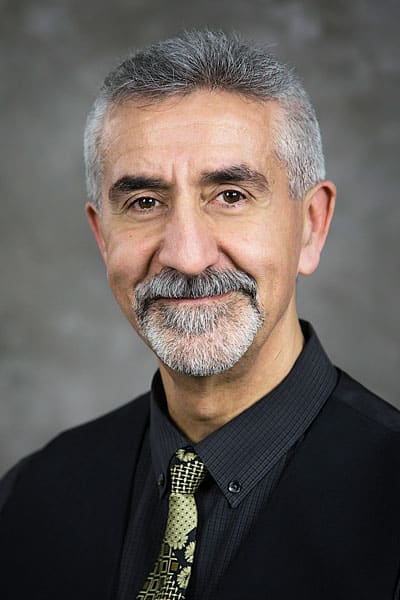When it comes to a transforming industry, the past can often be like a frozen parking brake holding back the organization from advancing. That’s the case when it comes to legacy IT architecture in healthcare, explains Steve L. Schiavone, chief architect and chief technology officer at Maricopa Integrated Health System (MIHS) in Phoenix.
Schiavone confronted this issue head-on when he joined the regional healthcare system in 2013. As he took stock of the organization’s IT infrastructure, he had two realizations. One was that in a few years, the equipment would be on the verge of obsolescence. And two, the current architecture was not flexible enough to support the organizational change that was coming. Similar to other healthcare systems, MIHS was planning to open a significant number of ambulatory facilities to serve patients closer to where they lived. The exact scope of this strategy was yet to be determined, but it would mean IT would have to change.
Schiavone conceived and designed a new IT infrastructure that would be flexible enough to support the unpredictable future. His goal was to provide maximum flexibility no matter what strategies the organization adopted. As he explains, a gradual approach, where pieces of the infrastructure were upgraded over many years, wouldn’t work—a one-for-one technology swap out or replacement is not transformational.

“Many organizations make incremental changes to support the future,” Schiavone says. “Sometimes, it is better to simply build new systems for the future.” To that end, he proposed scrapping the existing IT infrastructure and building a new one from scratch. The overriding principle of the new architecture would be to abstract or virtualize all computing resources so that each MIHS site could easily plug into the organization’s core infrastructure with minimal underlying technology needed on-site. “All that we would need is an IT closet to connect to,” says Schiavone, adding that no major infrastructure would be necessary outside of the data center.
Each time that a new site opened, the IT investment would be minimal, and all system-wide services would be managed from a central location. Another major advantage would be the way IT security would be deployed. Instead of the existing scheme of placing security features in points along the network, security would be embedded into the DNA of everything, Schiavone says.
In addition, MIHS personnel would no longer operate the data center. Instead, that task would be right-sourced to a colocation site away from the main campus, saving space and making more efficient use of hardware. The existing data center occupied about 2,300 square feet, but the new data center footprint would be just four hundred square feet. The number of racks would be reduced from fifty to just sixteen, as Schiavone says MIHS has moved toward ultra-high
density computing.
Schiavone’s four hundred-page technology road map, titled MIHS careNET, defined new architectural and engineering design principles, standards, and goals and provided a set of traceability matrices that translated the MIHS strategic objectives and IT strategic goals into IT technical objectives, technology domains, and capabilities, programs, and projects.
Schiavone was convinced that this sweeping change in IT design was essential to support MIHS’ future, but it was going to take a major investment. MIHS’ senior vice president and CIO Kelly Summers, an author of the MIHS IT strategic plan, made a persuasive case, emphasizing the essential need for IT to change drastically in order to support the organization’s new direction.
“A lot of the conversation is very technical,” Schiavone says, adding that it needed to be put in terms that board members and C-suite executives would understand. Summers emphasized the ability to open more remote sites faster, with stronger provisions to protect systems, data, and people. With a number of highly publicized data breaches in the news, the pitch had resonance.
In 2014, the board developed a proposal that involved the reinvention of care and a drastic reimagining of the organization. Taxpayers got on board, voting to spend roughly $934 million for improving acute care, ambulatory services, and behavioral health services. Within this award, about $23 million was allocated to the transforming the technical foundation of IT.
As of July 2017, a new colocation data center with a new technical foundation opened, and MIHS was in the final stages of upgrading its new operational EMR software platform. At the time of press, the plan was to begin migrating legacy IT systems to the new data center in mid-2018. The new hyper-converged architecture offers a more robust, more secure infrastructure that will be able to support operations anywhere MIHS wants to go. “We have, in effect, created an entire virtual-technical ecosystem or private cloud,” Schiavone explains. And the speed and cost to set up a new remote site will be minimal, no matter what type of clinic is opened. That holds true for even a nonclinical office such as a call center, as well.
Moving to a new IT infrastructure required a massive retraining of in-house IT personnel, as staff needed to become familiar with the new technology and get certified to maintain it. That initiative included having MIHS staff members shadow the consultants hired to deploy the new technology. This way, the organization received the benefit of training along with the actual deployment. To ease the transfer of responsibility for IT from a consulting firm to MIHS IT staff, there will be a one-year overlap where both groups will work together on operating and maintaining the new system.
It’s been a major undertaking—short-term pain for long-term gain. “We have basically created a new IT organization over the last 6–9 months,” Schiavone says. The reinvention was an absolute necessity, he adds. The available technology has to be able to support the strategic direction, even if it means starting over with a clean slate.
“You can’t be a barrier for change,” he says. “Many people are afraid to throw away a legacy infrastructure, but it may be time to reinvent IT along with healthcare.”

